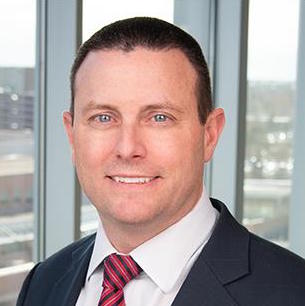Are surgeons giving patients unrealistic expectations about recovery after robotic lung surgery? That’s what CU Department of Surgery faculty member Robert Meguid, MD, MPH, and surgery resident Adam Dyas, MD, set out to discover after realizing the guidance they were offering patients might be based on outdated or anecdotal information.
“Traditionally, in surgery, we're taught to tell patients that they'll be back to normal from surgery within six weeks,” says Meguid, professor of cardiothoracic surgery. “In thoracic surgery over the past five or six years, we've had an increase in the percentage of operations that are done robotically, as opposed to via open or video-assisted minimally invasive approaches. Anecdotally, we're seeing patients have less pain and quicker return to function after robotic surgery, but we haven't actually studied it. When I tell patients, ‘You'll be back to normal or near normal by six weeks,’ it's a supposition. It's not evidence based.”
Collecting the data
So Meguid and Dyas set out to collect the evidence, administering to patients a survey that measured such recovery elements as cognition, physical function, depression, fatigue, sleep disturbance, pain interference, and ability to participate in social roles and activities. Patients who received a robotic anatomic lung resection — robotic surgery to remove part of the lung, most often for treatment of lung cancer — were given the survey by thoracic surgery clinic team members at their preoperative and postoperative clinic visits, then via email at 30 days and 90 days after the operation, to see how their perceived quality of life changed over time.
Gathering what’s known in medical research as patient-reported outcomes is an important part of refining care, Meguid says.
“Traditionally, we've dictated to patients what their care will be as physicians and surgeons, but appropriately and importantly, there's been an ongoing shift in medicine to engage the patients to figure out what their care is and what they want,” Meguid says. “This is a way to understand how they're recovering, as opposed to just doing a physical examination, seeing them in clinic and looking at their incisions and checking their vitals. This is much more real. Patient-reported recovery is how you think you're doing, how you feel, compared to how you want to be feeling.”
The researchers collected data on 75 individuals, finding to their surprise that patients were not fully recovered even after 90 days, despite the common wisdom they were hearing from surgeons prior to their operations.
“We found that on average, the summary quality-of-life score remained below pre-surgery baseline scores, even at 90 days, which was somewhat surprising,” Dyas says. “Even at three months, patients were not at their baseline quality of life pre-surgery. The physical aspect was almost back at baseline, but some of the individual cognitive domains had not quite returned to their baseline scores, and in fact, even decreased as time went on.”
Using the results
The results, published in January in the Journal of Robotic Surgery, can better inform surgeons what to tell patients about recovery, Dyas says — information that may in itself aid in some quality-of-life elements.
“If they're expecting to be fully well by three months and they're not, that could affect their mental and emotional wellbeing in and of itself,” Dyas says. “There’s also an opportunity to look at interventions to potentially alleviate or quicken recovery to baseline quality of life — to see if there are any interventions we could potentially apply to patients to help either in the preoperative area or post operative timeframe to try and get these quality-of-life measures back to baseline more quickly.”
Those interventions could include physical therapy and counseling, Meguid says, as well as referrals to various specialists.
“We can use this data to guide individual patient recovery plans that include physical therapy, pulmonary rehab, psychiatric counseling, increased frequency of postoperative visits, and referral to pain clinics,” he says. “There's no reason we shouldn't be able to do that at our institution, because the data collection methods already exist. I perceive that as the future of what we could do.”
Changing communication
Dyas and Meguid currently have no plans to follow patients any farther out post-recovery, though they note that the stage is set for other researchers to do so. The most important takeaway for other surgeons, they say, is to be more thoughtful about how they communicate with patients prior to surgery.
“This has really informed my discussions with patients,” Meguid says. “I tell them that most of the recovery happens in the first six weeks, similar to what I told them before, but that it takes longer than three months to get back to the quality of life you had before surgery. It's critical, as physicians and surgeons, that we educate patients to the best of our knowledge about what recovery is going to be like so they can appropriately consider surgery, and they can plan their recovery with their family. We want them to have reasonable expectations about recovery so they're not feeling betrayed by the medical system that's there to help them. “



.png)

